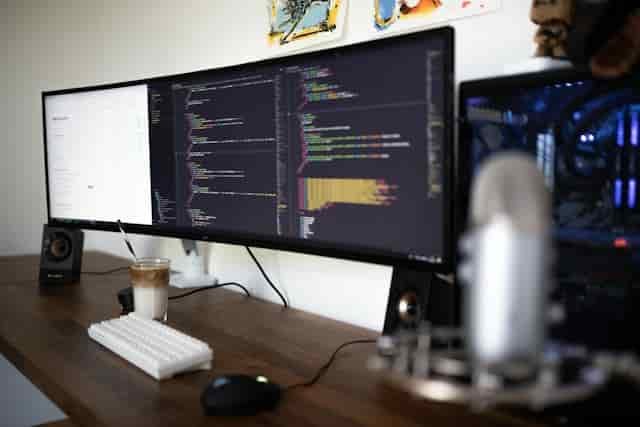As remote work becomes increasingly prevalent, organizations face new challenges in managing their workforce effectively. One of the most critical aspects of this management is ensuring accurate time tracking. An employee attendance monitoring system is essential for remote teams, providing a framework that enhances accountability, boosts productivity, and promotes fair practices.
The Need for Accurate Time Tracking in Remote Work Settings
Maintaining Accountability
In a remote work environment, it can be challenging to ensure that employees are fulfilling their responsibilities. An employee attendance monitoring system helps maintain accountability by:
- Tracking Work Hours: Employees can log their working hours easily, allowing managers to see who is online and engaged with their tasks.
- Reducing Time Theft: By monitoring attendance, organizations can minimize instances of time theft where employees may otherwise take advantage of the lack of oversight.
Enhancing Productivity
Accurate time tracking directly correlates with productivity levels. Here’s how:
- Identifying Patterns: By analyzing attendance data, you can identify patterns in employee work habits. This insight helps managers understand when employees are most productive and when they may need additional support.
- Encouraging Focus: Knowing that their time is being monitored can motivate employees to stay focused on their tasks, leading to higher overall productivity.
Fostering Fair Practices
Fairness and transparency are vital in remote work settings. An employee attendance monitoring system ensures:
- Objective Data Collection: The system provides factual records of employee attendance, reducing the potential for bias or favoritism.
- Equal Treatment: All employees are held to the same standards regarding attendance, which fosters a sense of fairness within the team.
Key Benefits of Implementing an Employee Attendance Monitoring System
Improved Time Management
One of the primary benefits of an attendance monitoring system is its ability to improve time management across your organization:
- Automated Time Tracking: Employees can clock in and out from anywhere, making it easier to track hours worked without manual input.
- Break Management: The system can monitor breaks taken by employees, ensuring that they adhere to company policies regarding rest periods.
Enhanced Reporting Capabilities
An employee attendance monitoring system provides valuable reporting features that help managers make informed decisions:
- Comprehensive Reports: Generate detailed reports on attendance trends, helping identify issues such as frequent absenteeism or patterns of tardiness.
- Data-Driven Insights: Utilize attendance data to inform HR decisions regarding staffing needs, workload distribution, and employee performance evaluations.
Streamlined Payroll Processing
Accurate time tracking simplifies payroll processing:
- Error Reduction: Automated systems reduce the likelihood of errors associated with manual timekeeping methods.
- Timely Payments: With accurate records of hours worked, payroll can be processed more efficiently, ensuring employees are paid accurately and on time.
Enhancing Accountability Through Monitoring
Real-Time Oversight
An employee attendance monitoring system provides real-time oversight that enhances accountability:
- Live Attendance Tracking: Managers can see who is logged in at any given moment, allowing for immediate follow-up if someone is absent without notice.
- Alerts for Absences: Automated alerts can notify managers when employees miss scheduled shifts or fail to log in on time.
Balancing Monitoring with Trust
While it’s important to monitor attendance, maintaining a balance between oversight and employee autonomy is crucial:
- Transparent Communication: Clearly communicate the purpose of monitoring systems to employees. Explain how these tools are designed to support them rather than micromanage.
- Empowering Employees: Allow employees access to their own attendance data so they can take ownership of their schedules and performance.
Driving Productivity with Attendance Monitoring
Identifying Inefficiencies
An employee attendance monitoring system helps identify inefficiencies within your team:
- Analyzing Work Habits: By examining patterns in attendance and productivity data, you can pinpoint areas where employees may be struggling or wasting time.
- Optimizing Workflows: Use insights gained from monitoring to streamline processes and improve overall efficiency.
Encouraging Self-Discipline
With clear expectations set by an attendance monitoring system:
- Structured Work Environment: Employees are more likely to develop self-discipline and maintain a structured routine when they know their hours are being tracked.
- Goal Setting: Encourage employees to set personal goals based on their tracked hours and productivity levels, fostering a sense of ownership over their work.
Ensuring Fair Practices with Attendance Monitoring
Fair Pay and Overtime Management
An employee attendance monitoring system plays a vital role in ensuring fair pay practices:
- Accurate Hour Tracking: By accurately tracking hours worked, organizations can ensure that employees are compensated fairly for their time.
- Preventing Overtime Abuse: The system helps monitor overtime hours closely, preventing potential abuse while ensuring compliance with labor laws.
Legal Compliance
Implementing an attendance monitoring system also helps organizations remain compliant with labor regulations:
- Documenting Attendance Records: Accurate records serve as documentation in case of disputes regarding pay or hours worked.
- Adhering to Labor Laws: Ensure that your monitoring practices comply with local labor laws regarding employee privacy and rights.
Actionable Tips for Effective Implementation
Choosing the Right System
When selecting an employee attendance monitoring system, consider these factors:
- User-Friendly Interface: Ensure the software is easy for both managers and employees to use.
- Integration Capabilities: Look for systems that integrate seamlessly with existing HR tools and payroll systems.
Training Your Team
To maximize the effectiveness of your attendance monitoring system:
- Provide Comprehensive Training: Offer training sessions for both managers and employees to familiarize them with the new system.
- Encourage Feedback: Solicit feedback from your team about the system’s usability and address any concerns they may have.
Conclusion
In today’s remote work environment, an employee attendance monitoring system is essential for maintaining accountability, enhancing productivity, and ensuring fair practices. By implementing such a system thoughtfully, you empower your workforce while fostering a culture of responsibility and transparency. With accurate time tracking at your fingertips, you can navigate the challenges of remote work effectively and create a more engaged team ready to meet organizational goals.



